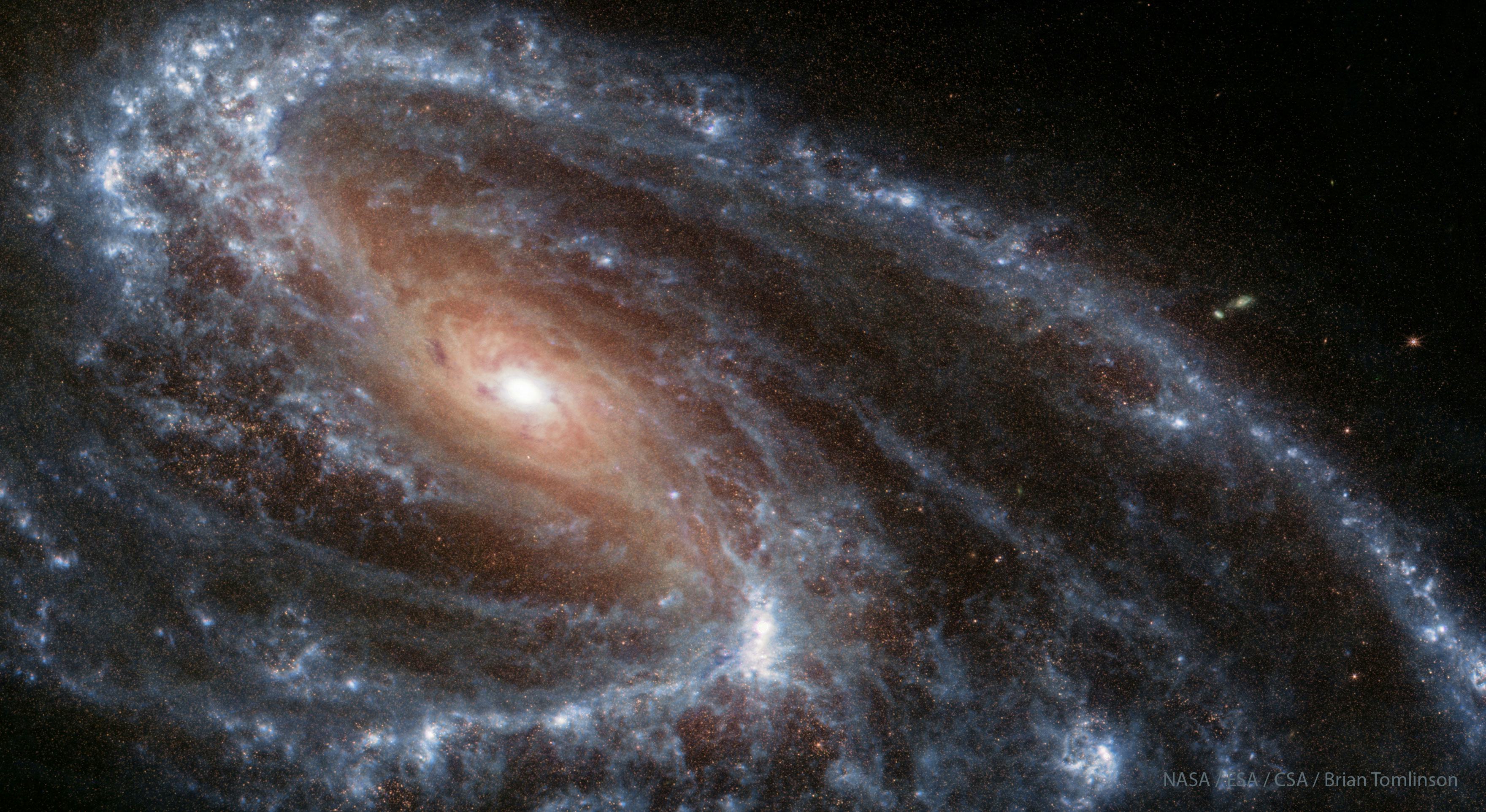
The James Webb Space Telescope’s (JWST) instruments recently captured this detailed close-up view of lopsided spiral galaxy M66. The galaxy is lopsided thanks to the tidal pull of its two partners in a group of galaxies called the Leo Triplet; all three galaxies have warped and reshaped each other during their close passes. This image from JWST sheds light on the structure and chemical makeup of M66.
A Galactic Dance Troupe
M66 is part of the Leo Triplet: three spiral galaxies, about 35 million light years away, that dance around a shared center of gravity, shoving and pulling at each other every time they pass close together. The gravitational tug of war has shaped all three galaxies in striking ways. Each one has a central bar of stars stretched across its center — a structure that usually forms thanks to tidal forces during close passes with other galaxies.

The tidal pull stretched a stream of stars and dust out of NGC 3628, like pulling taffy on a cosmic scale, and the tail of stars now trails behind the galaxy. M65’s spiral disk is slightly warped from the periodic tugs of the other two galaxies. And although most of the star’s in M65 are older, and the galaxy’s star-forming years should have been far behind it, the galactic tides churned up by its neighbors seem to have kicked off new waves of star formation.
M66 itself is a bit lopsided, with one unusually large spiral arm curving at a slightly off-kilter angle. Close calls with the other two members of the Leo Triplet have even changed the galaxy’s chemical makeup: most of the gas floating around in M66 should be made up of individual atoms, which are too sparsely scattered to clump together into molecules, but data from several telescopes reveals that actually, most of the mass in M66 is molecular gas. That’s probably because the tidal push and pull of M65 and NGC 3628 compressed the gas so much that it was able to clump together.
Photographer Brian Tomlinson recently turned data from JWST’s Near Infrared Camera (NIRCam) and Mid-InfraRed Instrument (MIRI) into this stunning image of M66.







